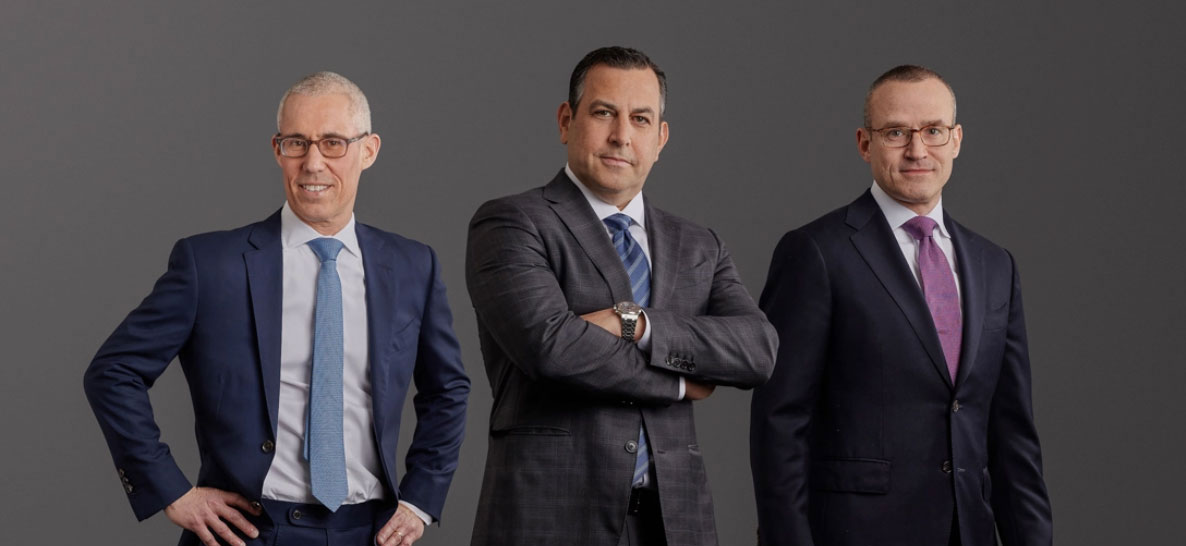
Under New York personal injury law, transit operators like the MTA have a legal duty to protect passengers, pedestrians, and workers. When negligence leads to a serious train accident, they can and should be held responsible. At Hecht, Kleeger & Damashek, P.C., our NYC train accident lawyers understand the complexities of these cases, from identifying the liable agencies to navigating strict filing deadlines. With decades of experience and a track record of success, including a $4.72 million settlement for an MTA injury victim, we’re ready to pursue every dollar you deserve.
Train accidents in New York City are more common than many realize, often due to operator error, signal failures, equipment defects, or MTA negligence. These incidents can lead to catastrophic injuries and are almost always preventable. At Hecht, Kleeger & Damashek, P.C., our NYC train attorneys—Jordan Hecht, Jonathan Damashek, and Judd Kleeger—bring decades of experience pursuing claims against the MTA and other rail operators. We know how to navigate the complexities of train accident litigation and fight for maximum compensation and justice.
Over 100 5-Star Google Reviews

On This Page
Our law firm is located in Midtown Manhattan and serves clients across NYC, including Manhattan, Brooklyn, the Bronx, Queens, and Staten Island.
Tell Us What Happened
"*" indicates required fields
What Are The Differences In An Injury Case Against A Private Party vs A Public Entity?
Video Highlights
Video Transcript
If an accident occurs on public property, the case proceeds ... normally, as it would as if it were a private owner. The only difference is that there are different deadlines that you have to be careful about. In the case of a municipality, you need to file a notice of claim within 90 days of the accident, and the statute of limitations is shorter than a private defendant.
Read Full Video Transcript
Train accidents are more common than you’d expect. The US Bureau of Transportation Statistics (BTS) shows that on average, there are over 1,850 train accidents in the U.S. every year. Let us review your circumstances, explain your rights after a train accident, and make sure you get everything you need and deserve.
Various physical and human components come into play in any railroad accident, which makes these cases so complex. Potential victims in a train crash can include passengers, occupants of other vehicles, and pedestrians, among others. Also, there several types of incidents and contributing factors that could lead to bodily harm, including but not limited to:
Due to their size, speed, and sometimes hazardous cargos, train accidents are more likely to cause extensive damage and catastrophes injuries. Whether it is a train derailment or serious collision, many train accidents stem from:
While many train accidents are preventable, people are still being injured every year. At Hecht, Kleeger & Damashek, P.C., our train accident lawyers can help you gather the facts, determine what caused your accident, document your injuries, and fight for the compensation you are legally entitled to after any of the following.
Claims involving train injuries are complicated for a variety of reasons. It’s in your best interests to retain a lawyer to assist with getting the compensation you deserve, and who can help with:
Train collision claims are generally made complicated by the nature and number of the parties who may be responsible for causing the incident. It may be obvious who to pursue after an Amtrak accident, a NYC train crash, or collision with regional carriers because these parties are typically easy to identify and as owner-operators, are entrusted with maintaining a safe train travel experience.
However, each of the potential parties involved may require a different process for filing a train accident claim. Railroad and transit companies are either public or private. As such, the procedures and laws regarding how you may file an injury claim against public entities differ from traditional personal injury claims involving private companies. Your case can also become complex if other organizations are involved that are associated with the railroad industry. Examples include:
Compensation in Train Accident Cases
JUMP TO SECTION“I cannot recommend Jon Damashek highly enough. I attribute the favorable outcome of my case to his consummate and tireless dedication and tenacity. Just as important, he was truly there with me every step of the way. He was very…
Start Your Case
Free Case Review | No Up-Front Costs | Pay Nothing Unless You Win | Secure The Highest Possible Reward
212-490-5700The MTA, LIRR and Amtrak have a legal duty to ensure the safety of their customers, starting with compliance with all regulations implemented by federal, state, and local transit authorities. These entities must also protect guests from reasonably foreseeable harm, like the duty of property owners in premises liability cases. When they fail to comply or are careless in train operations, railroad companies can be held accountable for the accidents and injuries they cause.
As a train accident victim, you may be entitled to recover monetary damages for your losses. In a train crash claim, various forms of compensation are available, including:
If you tragically lost a family member in a fatal train-related incident, you may also have rights under New York’s wrongful death law. A railroad accident lawyer can provide more information on wrongful death actions for deceased individuals.
We encourage you to research our attorneys, read our client reviews, and call 212-490-5700 for a free consultation to see why HKD is a top-rated NYC law firm serving Manhattan, Brooklyn, Queens, the Bronx, and Staten Island.
Train Accident FAQs
JUMP TO SECTIONSeek medical attention, report the accident to authorities, collect witness contact information, and document the scene if possible.
Investigators analyze evidence, witness statements, and possibly expert testimonies to establish negligence and determine fault.
Potentially liable parties include the train operator, transit authority, or other negligent parties contributing to the accident.
Demonstrating negligence involves showing the party had a duty of care, breached that duty, and caused your injuries.